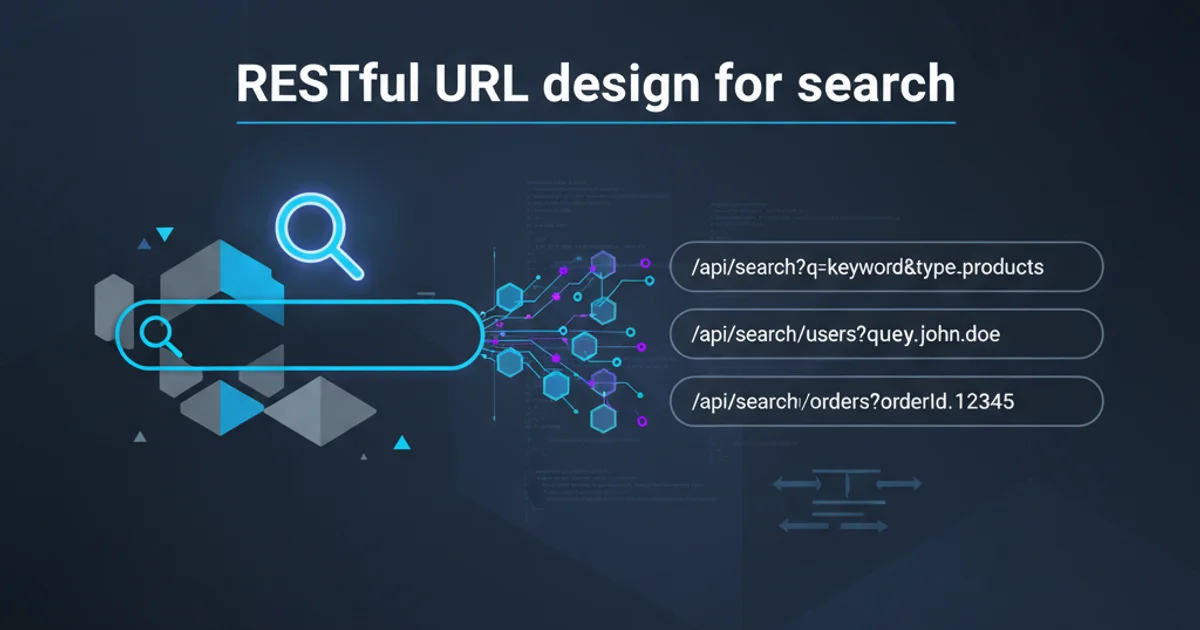RESTful URL design for search
Categories:
Designing RESTful URLs for Effective Search Functionality

Explore best practices for structuring RESTful URLs to support robust and intuitive search capabilities, covering query parameters, path segments, and filtering.
Designing effective RESTful URLs for search functionality is crucial for building intuitive, cacheable, and shareable APIs. This article delves into the principles and common patterns for structuring search-related endpoints, ensuring your API is both powerful and user-friendly. We'll cover various approaches, from simple keyword searches to complex filtering and pagination, and discuss their implications for API design.
Basic Search: Keyword and Simple Filters
For basic keyword searches and simple filtering, query parameters are the most common and recommended approach. They are ideal for non-hierarchical data and allow for easy combination of multiple search criteria. The key is to use descriptive parameter names that clearly indicate their purpose.
GET /products?q=laptop
GET /products?category=electronics&price_max=1000
GET /users?status=active&role=admin
Examples of basic keyword and simple filter searches using query parameters.
snake_case or camelCase) across your API to improve predictability and ease of use for developers.flowchart TD
A[Client Request] --> B{"Search Type?"}
B -- Keyword/Simple Filter --> C[Use Query Parameters]
C --> D[GET /resource?q=term&filter=value]
D --> E[API Processes Request]
E --> F[Returns Filtered Data]Flowchart illustrating the process for basic keyword and simple filter searches.
Advanced Filtering, Sorting, and Pagination
As search requirements become more complex, involving multiple filters, sorting options, and pagination, query parameters remain the standard. It's important to define clear conventions for these parameters to maintain API clarity. Common patterns include using sort_by and order for sorting, and page and limit (or offset) for pagination.
GET /articles?tags=rest,api&author_id=123&sort_by=published_date&order=desc&page=2&limit=10
GET /orders?status=pending&created_after=2023-01-01T00:00:00Z&sort_by=total_amount&order=asc
Examples of advanced filtering, sorting, and pagination parameters.
Handling Complex Search Queries and Full-Text Search
For highly complex search queries, such as those involving boolean logic, nested conditions, or full-text search engines, a dedicated search endpoint with a POST request body might be more appropriate. While GET requests are generally preferred for idempotent operations like search, a POST can handle larger, more structured query payloads that might exceed URL length limits or become unwieldy in query parameters. The response, however, should still be the search results, making it conceptually idempotent.
POST /search/products
Content-Type: application/json
{
"query": {
"match": {
"description": "lightweight laptop"
},
"filter": [
{"term": {"category": "electronics"}},
{"range": {"price": {"lte": 1000}}}
]
},
"sort": [
{"price": "asc"}
],
"pagination": {
"page": 1,
"size": 20
}
}
Example of a complex search query using a POST request body.
flowchart TD
A[Client Request] --> B{"Complex Query?"}
B -- Yes --> C[Use POST /search/resource]
C --> D[Send JSON Payload in Body]
D --> E[API Processes Complex Query]
E --> F[Returns Structured Search Results]
B -- No --> G[Use GET /resource?params]
G --> EDecision flow for choosing between GET query parameters and POST request body for search.